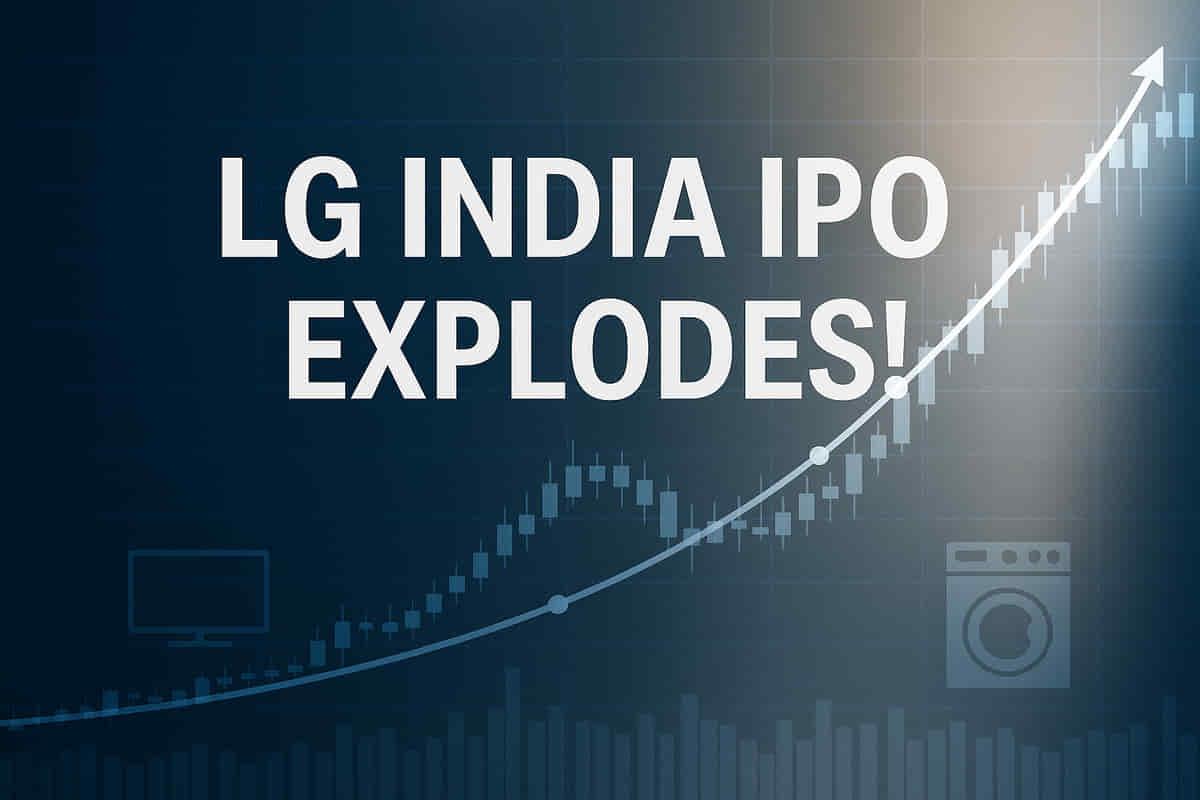LG Electronics India IPO Debuts Strong, Outlining Ambitious Growth Strategy
Consumer Products
|
30th October 2025, 12:32 AM

▶
Short Description :
Detailed Coverage :
LG Electronics India's initial public offering saw a highly successful debut, with its stock listing on the BSE at Rs 1,715 and on the NSE at Rs 1,710, a substantial 50% premium over its issue price of Rs 1,140. This strong performance is uncommon in recent market listings. The company, a household name in India for nearly three decades, holds a leading position across various consumer durable categories.
LG's strategy involves significant expansion and integration. It is investing in a new manufacturing plant at Sri City, Andhra Pradesh, for backward integration of components like AC compressors. This aims to reduce logistics costs and increase domestic sourcing of raw materials, targeted to reach about 63% in four years. Furthermore, LG plans to grow its export share from India.
A significant evolution is LG's push into recurring revenue models. Its after-sales service business is being transformed into a profit engine, with plans to grow AMC revenue by over 25% annually through initiatives like the "Careship" subscription service. The company is also exploring appliance rentals. Concurrently, LG is expanding its B2B segment, targeting areas like HVAC systems and commercial appliances.
The company is aggressively pursuing premiumization, with products like OLED TVs contributing significantly and holding strong market shares. Financially, LG India has demonstrated strong profit growth and projected revenue growth. It boasts healthy operating margins, high return on equity, and a nearly debt-free balance sheet with a lean working capital cycle.
Despite trading at a high valuation, investors are pricing in LG's future potential. However, the company faces significant competition. Maintaining market leadership requires substantial advertising. Risks include royalty payments, rising input costs, and execution challenges.
Impact: This news is highly impactful for the Indian stock market, particularly within the consumer durables sector. A successful IPO and the detailed strategic vision of a major multinational like LG Electronics India can influence investor sentiment towards IPOs, consumption-led stocks, and manufacturing initiatives in India. It highlights the attractiveness of the Indian market for foreign investment and domestic growth. Rating: 8.
Difficult terms: * CAGR (Compound Annual Growth Rate): This is the average annual growth rate of an investment over a specified period, assuming that profits are reinvested at the end of each year. It gives a smoother representation of growth than just looking at year-on-year changes. * Backward Integration: This is a strategy where a company takes control of more stages of its production process. For LG, it means producing more of the components (like compressors) that go into its final products, rather than buying them from other suppliers. * Forex Sensitivity: This refers to how much a company's financial results are affected by fluctuations in exchange rates between different currencies. If a company imports a lot, it's more sensitive to a weaker rupee. * B2B (Business-to-Business): This refers to transactions and business dealings between two companies, rather than between a business and a consumer. For LG, it means selling appliances and systems to other businesses (e.g., hotels, offices). * HVAC (Heating, Ventilation and Air Conditioning): Systems used to control the temperature, humidity, and purity of the air in an enclosed space. * AMC (Annual Maintenance Contract): An agreement with a service provider to maintain a product or system for a fee over a year. * Careship: A specific subscription-based service model offered by LG Electronics India for appliance maintenance and service. * OLED TV (Organic Light-Emitting Diode Television): A type of television display technology that uses organic compounds that emit light when an electric current is applied. They are known for superior picture quality. * FY (Fiscal Year): A 12-month period that a company or government uses for accounting purposes. In India, the fiscal year typically runs from April 1 to March 31. For example, FY22 refers to the fiscal year 2021-2022.